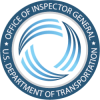What We Looked AtTwo fatal crashes involving Boeing 737 MAX 8 aircraft in 2018 and 2019 drew widespread attention to the Federal Aviation Administration's (FAA) oversight and certification practices, including the Agency's process for establishing pilot training requirements for the aircraft. The Chairmen and Ranking Members of the House Committee on Transportation and Infrastructure and its Subcommittee on Aviation requested that we review domestic and international pilot training standards related to commercial passenger aircraft. Our audit objectives were to (1) evaluate FAA's process for establishing pilot training requirements for U.S. and foreign air carriers operating U.S.-certificated large passenger aircraft and (2) review international civil aviation authorities' requirements for air carrier pilot training regarding the use of flight deck automation. We focused on FAA's role in setting training requirements as the certificating authority for Boeing aircraft and its efforts to enhance upset prevention and recovery training.What We FoundWhile each country is responsible for setting its own pilot training requirements, FAA has the opportunity to inform other countries' requirements through increased transparency and oversight. For example, FAA provides aircraft-specific guidance to air carriers and other organizations when developing training programs. However, the guidance does not clearly state the level of experience FAA assumed pilots would have--which is significant given that the skills and average experience of pilots can vary between countries. In addition, FAA has worked with international civil aviation authorities to provide guidance on air carrier pilots' use of flight deck automation. This includes conducting outreach and training internationally on specific flight scenarios and leading an ongoing international working group to develop new international standards and guidance on pilots' use of automation. Nevertheless, our survey of international civil aviation authorities found that countries' requirements regarding the use of flight deck automation varied.Our RecommendationsFAA concurred with our four recommendations to enhance the Agency's transparency and oversight to better inform international pilot training requirements and proposed appropriate planned actions and completion dates.
Open Recommendations
| Recommendation Number | Significant Recommendation | Recommended Questioned Costs | Recommended Funds for Better Use | Additional Details | |
|---|---|---|---|---|---|
| 2 | Yes | $0 | $0 | ||
| Develop and implement a process to evaluate existing Boeing airplane flight manuals to determine whether they contain required normal, non-normal, and emergency procedures that are necessary for the safe operation of the aircraft. Within this process, include methods to determine what corrective actions are needed if deficiencies are identified. | |||||
| 3 | Yes | $0 | $0 | ||
| Develop and implement a documented process to identify what information manufacturers must include in airplane flight manuals. | |||||


